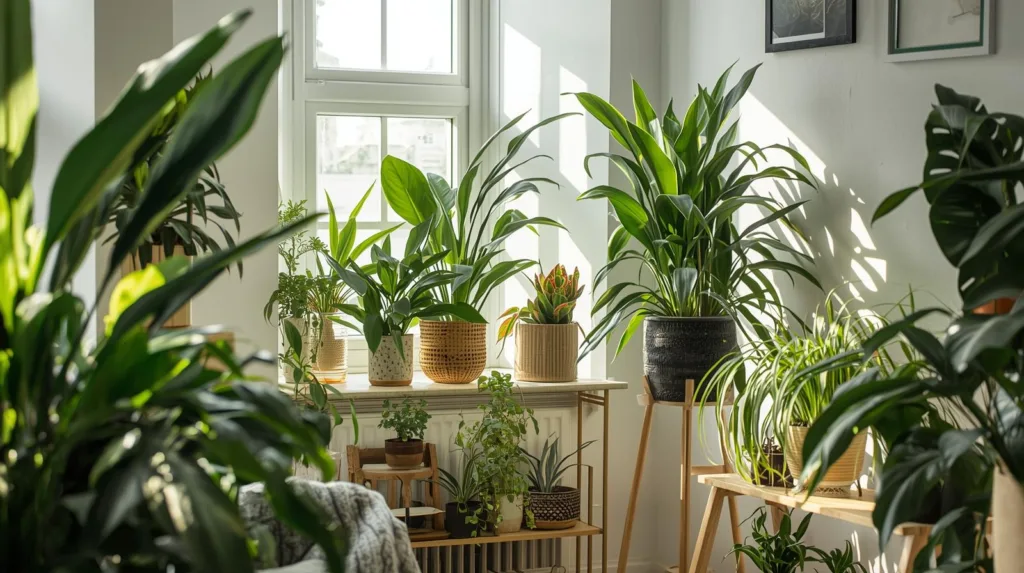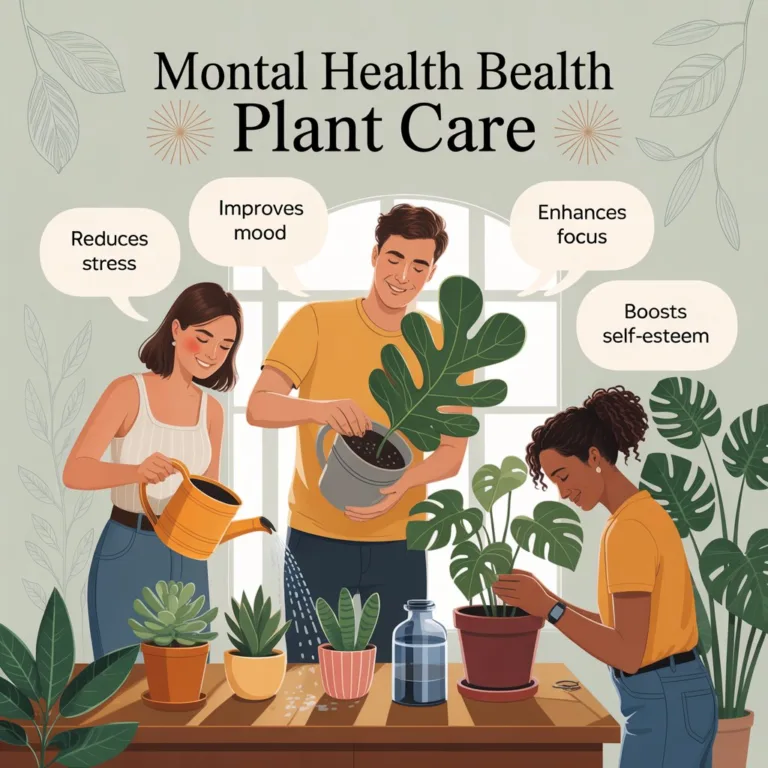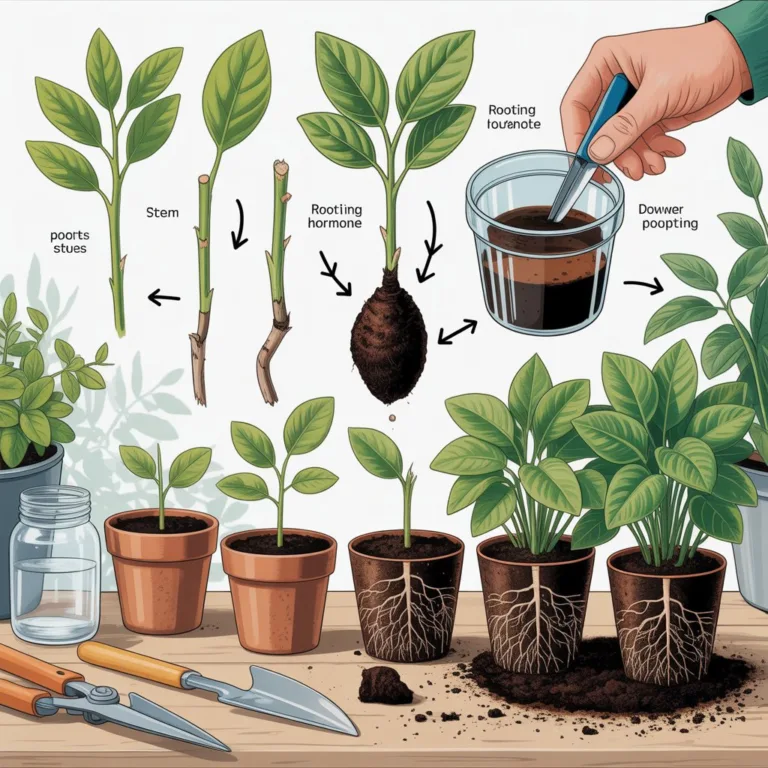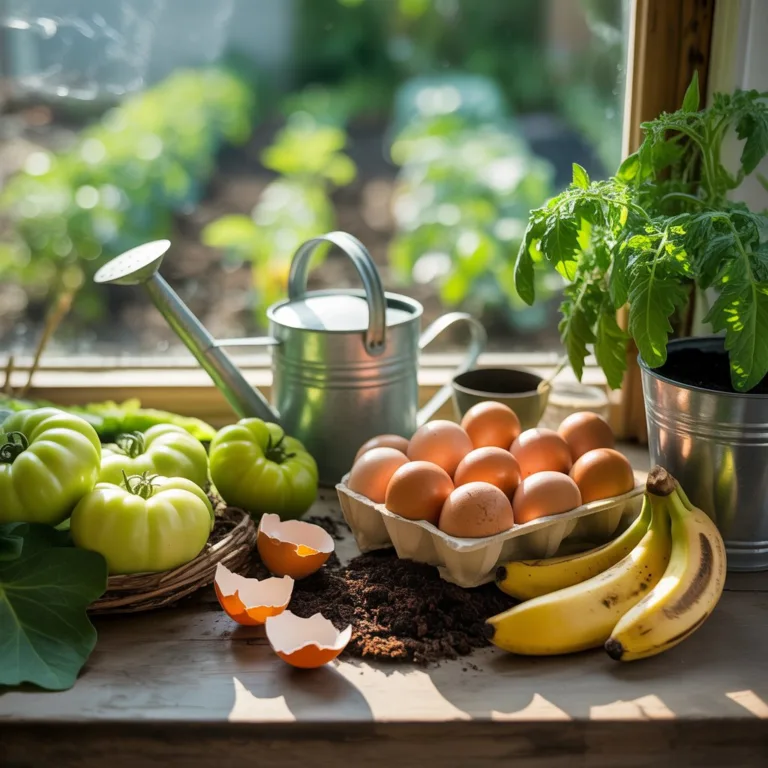Modern life often keeps us inside — working, studying, and relaxing in enclosed spaces. Yet few realize that the air we breathe indoors can sometimes be more polluted than outdoor air. Paints, furniture, cleaning products, and even electronics release invisible particles and chemicals known as volatile organic compounds (VOCs). Over time, these pollutants can affect concentration, sleep, and general well-being.

Thankfully, nature offers a gentle, beautiful, and sustainable solution. Harnessing the power of plants to improve air quality indoors is an easy, eco-friendly way to bring balance back to your environment. Houseplants don’t just add a touch of green; they act as natural air filters, absorbing toxins, releasing oxygen, and even regulating humidity.
This article explores how plants can purify the air, which species are most effective, and how to design your own indoor ecosystem for better health, productivity, and peace of mind.
Why Indoor Air Quality Matters
The Hidden Pollutants in Your Home
Indoor air pollution may come from everyday sources: synthetic paints, cleaning sprays, adhesives, air fresheners, and even carpeting. Common contaminants include:
- Formaldehyde: Released from furniture, pressed wood, and fabrics.
- Benzene: Found in detergents, plastics, and tobacco smoke.
- Trichloroethylene: Common in varnishes and cleaning products.
- Xylene and Toluene: Emitted from paints and adhesives.
These compounds can linger for hours or days, affecting indoor air. When combined with dust and poor ventilation, the environment can feel heavy, stale, and irritating — especially for those with allergies or respiratory sensitivities.
How Plants Naturally Help
Plants are nature’s original air purifiers. Through photosynthesis, they absorb carbon dioxide and release oxygen, while their roots and leaves trap and neutralize toxins. Soil microbes living in the potting mix also contribute by breaking down chemicals into harmless substances.
NASA’s landmark Clean Air Study in the 1980s first demonstrated that certain plants could significantly reduce VOCs in sealed environments — such as space stations. Today, that same principle applies to our homes, offices, and schools.
The Science Behind Green Air Purifiers
Photosynthesis and Respiration
Plants breathe differently from humans, but the exchange of gases is complementary. During the day, leaves absorb carbon dioxide and light energy, producing oxygen. At night, some plants reverse this process slightly — though a few, like succulents and orchids, continue releasing oxygen in low light.
Phytoremediation: Nature’s Detox System
Phytoremediation is the ability of plants to remove, stabilize, or destroy contaminants in air, soil, or water. In indoor environments, this happens when:
- Leaves absorb airborne chemicals through tiny pores (stomata).
- Roots and soil microorganisms break down or trap toxins.
- Moisture released from leaves increases humidity, reducing dust and allergens.
Even a small collection of strategically placed plants can noticeably improve air freshness within weeks.
Best Plants for Cleaner Indoor Air
When choosing plants to enhance air quality, look for hardy species that thrive indoors, require minimal care, and are known for their purifying abilities.
Spider Plant (Chlorophytum comosum)
This resilient plant is ideal for beginners. It removes formaldehyde, carbon monoxide, and xylene efficiently. Its cascading green and white leaves also make it perfect for hanging baskets or high shelves.
Care tip: Bright, indirect light and moderate watering keep it lush.
Peace Lily (Spathiphyllum wallisii)
One of the most effective air purifiers, the peace lily removes mold spores and chemicals like trichloroethylene and benzene. Its white flowers bring an elegant, calming touch to any room.
Care tip: Keep the soil moist but not soggy; it thrives in medium light.
Snake Plant (Sansevieria trifasciata)
Also known as mother-in-law’s tongue, this plant is nearly indestructible. It’s exceptional for bedrooms because it continues to release oxygen at night.
Care tip: Tolerates low light and irregular watering — ideal for busy people.
Boston Fern (Nephrolepis exaltata)
This fern excels at filtering formaldehyde and improving humidity. It’s especially helpful in dry or air-conditioned environments.
Care tip: Mist regularly and keep soil damp for best results.
Areca Palm (Dypsis lutescens)
A natural humidifier, this palm adds tropical charm while removing carbon dioxide and airborne toxins.
Care tip: Prefers bright light and consistent moisture.
Rubber Plant (Ficus elastica)
With broad, glossy leaves, the rubber plant absorbs toxins like formaldehyde and carbon monoxide. It’s also excellent for large rooms.
Care tip: Needs indirect sunlight and occasional pruning to control size.
English Ivy (Hedera helix)
This climbing plant filters benzene, toluene, and mold spores — making it useful in bathrooms or near damp areas.
Care tip: Provide moderate light and trim regularly to prevent overgrowth.
Designing Your Green Air Zone
Combining Aesthetics and Function
A well-planned plant arrangement not only purifies air but enhances visual harmony. Aim for a variety of textures, shapes, and shades of green. For example:
- Place tall species like areca palms or rubber plants in corners to anchor the room.
- Use trailing plants such as ivy or pothos on shelves for a cascading effect.
- Mix smaller varieties like peace lilies and ferns for a balanced look.
Ideal Placement for Airflow
Position plants near airflow sources — windows, vents, or fans — to help circulate purified air throughout the space. In offices, cluster several small plants around your workspace for maximum benefit.
Integrating Natural Materials
Complement your green setup with bamboo stands, clay pots, or woven baskets. These sustainable materials enhance the earthy aesthetic and minimize plastic use.
Caring for Your Indoor Garden
Healthy plants purify more effectively. A little consistent care ensures they thrive year-round.
Watering Wisely
Overwatering is one of the most common mistakes. Check the top inch of soil before watering; if it’s dry, it’s time to add moisture. Ensure pots have drainage holes to prevent root rot.
Light and Placement
Most air-purifying plants prefer indirect sunlight. Avoid placing them in direct afternoon rays that can scorch leaves. If natural light is scarce, LED grow lights can supplement without using much energy.
Dusting and Leaf Maintenance
Dust can block pores on leaves and reduce a plant’s ability to absorb pollutants. Wipe leaves gently with a damp cloth every two weeks to keep them vibrant and functional.
Natural Fertilizers
Use compost tea or organic fertilizers rather than synthetic options. Natural feeding encourages microbial activity in the soil — an important contributor to air purification.
The Psychological Benefits of Indoor Plants
Beyond clean air, plants profoundly influence our emotions and productivity.
Reduced Stress and Anxiety
Studies consistently show that being around greenery lowers heart rate and blood pressure. Caring for plants provides a grounding, meditative activity — a moment of calm in busy days.
Improved Focus and Creativity
Workspaces with indoor plants report higher concentration levels, creativity, and overall satisfaction. The natural colors and forms stimulate mental clarity and inspiration.
Better Sleep Quality
Plants that release oxygen at night, like the snake plant or aloe vera, can improve sleep by increasing air freshness in bedrooms. Their calming presence also creates a serene environment.
Eco-Friendly Practices in Indoor Gardening
Using plants to clean air is already eco-conscious, but you can go further by choosing sustainable habits.
Recycled Containers
Transform glass jars, old teapots, or wooden boxes into planters. These upcycled containers reduce waste and add charm.
Homemade Soil Mixes
Create your own potting soil using compost, coconut coir, and perlite. This eliminates the need for chemically treated commercial mixes.
Water Conservation
Collect rainwater or reuse leftover water from washing vegetables to hydrate your plants. It’s nutrient-rich and saves resources.
Composting Plant Waste
When trimming or repotting, compost old leaves and soil. This closes the loop of your indoor ecosystem.
Pairing Plants with Other Air-Purifying Methods
While plants do a remarkable job, combining them with other natural methods enhances overall air quality.
Beeswax Candles
Unlike paraffin candles that emit pollutants, beeswax candles burn cleanly and release negative ions that bind to dust particles, helping them fall out of the air.
Natural Ventilation
Opening windows daily, even for a few minutes, allows fresh air to circulate and reduces CO₂ buildup.
Activated Charcoal
Place bowls of activated charcoal around high-traffic areas. It’s a powerful natural odor and toxin absorber.
Salt Lamps and Natural Diffusers
Himalayan salt lamps and diffusers with essential oils like eucalyptus or tea tree can complement your plant setup, adding freshness and a subtle aroma.
How Many Plants Are Enough?
Research suggests that one medium-sized plant per 100 square feet can significantly improve air quality. However, even a few plants make a noticeable difference in comfort and freshness.
For a typical living room or bedroom, 5–10 plants of various types and sizes provide a balanced effect. Smaller rooms may only need two or three. Focus on placement and variety rather than quantity alone.
Creating Mini Green Zones Around the Home
Instead of clustering all plants in one place, spread them strategically throughout the home.
- Living Room: Use large palms or rubber plants as statement pieces.
- Bedroom: Choose low-light, oxygen-producing plants like snake plants or peace lilies.
- Kitchen: Grow herbs such as basil or mint — both aromatic and functional.
- Bathroom: Ferns and ivy thrive in humidity and prevent mold growth.
- Workspace: Small succulents or pothos help refresh air and reduce visual fatigue.
Each zone can serve both aesthetic and functional purposes, turning your home into a living, breathing ecosystem.
The Connection Between Plants and Mindful Living
Tending to plants fosters mindfulness. Watering, pruning, or simply observing their growth encourages patience and gratitude. Watching new leaves unfold or roots take hold can remind us of slow, steady progress — a valuable lesson in our fast-paced world.
Your indoor plants become silent teachers of balance, resilience, and renewal. They reward consistent care with beauty and cleaner air, reminding us that sustainability starts with small, intentional acts.
Building a Greener Future Indoors
Choosing to harness the power of plants to improve air quality indoors is more than a design trend; it’s a lifestyle shift. Every pot of soil and sprouting leaf contributes to a healthier home and a lighter environmental footprint.
Whether you live in a city apartment or a countryside home, these living air purifiers create a connection between nature and modern living. The result is a sanctuary — fresh, peaceful, and alive — where breathing feels like a small act of wellness.
As you watch your plants thrive, you’ll notice that you, too, begin to breathe a little deeper. Surround yourself with nature’s quiet helpers, and let them transform not just your air, but your everyday life.

Sofia Greenfield is a sustainable gardening expert and environmental educator who inspires families and urban gardeners to cultivate green spaces responsibly. She shares practical tips on growing vegetables, herbs, and flowers using eco-friendly and recycled materials, emphasizing the joy of gardening while protecting the planet.



